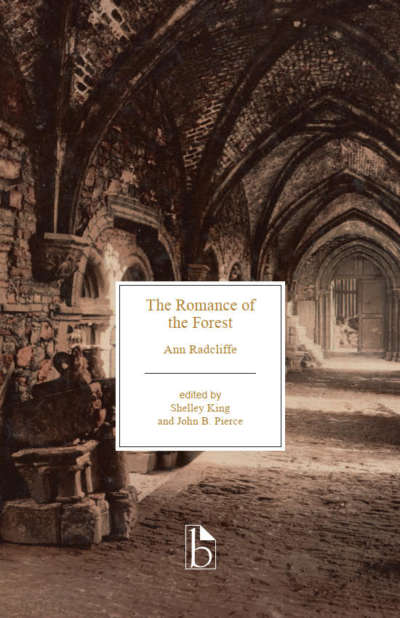This 1818 novel is set in a former abbey whose owner, Christopher Glowry, is host to visitors who enjoy his hospitality and engage in endless debate. Among these guests are figures recognizable to Peacock’s contemporaries, including characters based on Lord Byron and Samuel Taylor Coleridge. Mr. Glowry’s son Scythrop (also modeled on a famous Romantic, Peacock’s friend Percy Bysshe Shelley) locks himself up in a tower where he reads German tragedies and transcendental philosophy and develops a “passion for reforming the world.” Disappointed in love, a sorrowful Scythrop decides the only thing to do is to commit suicide, but circumstances persuade him to instead follow his father in a love of misanthropy and Madeira. In addition to satire and comic romance, Nightmare Abbey presents a biting critique of the texts we view as central to British romanticism.
This Broadview edition includes a critical introduction and a range of illuminating contemporary documents on the novel’s reception and its German and British literary contexts. A selection of Peacock’s critical and autobiographical writings is also included.
Comments
“Though considered a light—even a slight—novel, Nightmare Abbey requires of its ideal reader extensive knowledge of the age that produced it: the literature, the politics, and, not least, the personalities associated with English Romanticism. Lisa Vargo succeeds admirably in bringing this rich background—masterfully synthesized in a critical introduction and amply documented in notes and appendices—to bear on the work for which its author is best known and which, as much as any other work of the period, engages English Romantic culture in all its numerous contradictory forms. Vargo has brought together the resources of recent Peacock scholarship and an invaluable archive of excerpted contemporary texts to produce an edition of Peacock’s most characteristic—and arguably his best—novel for a new generation of readers.” — James Mulvihill, University of Alberta
“Published in the same year as Mary Shelley’s Frankenstein, Thomas Love Peacock’s Nightmare Abbey is not just a burlesque of the Gothic novel, but a sustained critique of what he regarded as ‘the darkness and misanthropy of modern literature.’ His witty satire on ‘the spirit of the age’ can best be understood through an awareness of its complex intertextual relations with other works of Romantic literature. To help promote such awareness, Lisa Vargo’s new Broadview edition provides a thoughtful introduction, detailed explanatory notes, and an exceptionally rich array of contextual material drawn from contemporary reviews of the novel, translations of earlier German literature, relevant works by Godwin, Coleridge, Shelley, Byron, and Hazlitt, and, perhaps equally important, Peacock’s own critical and autobiographical writings.” — Nicholas A. Joukovsky, Pennsylvania State University













